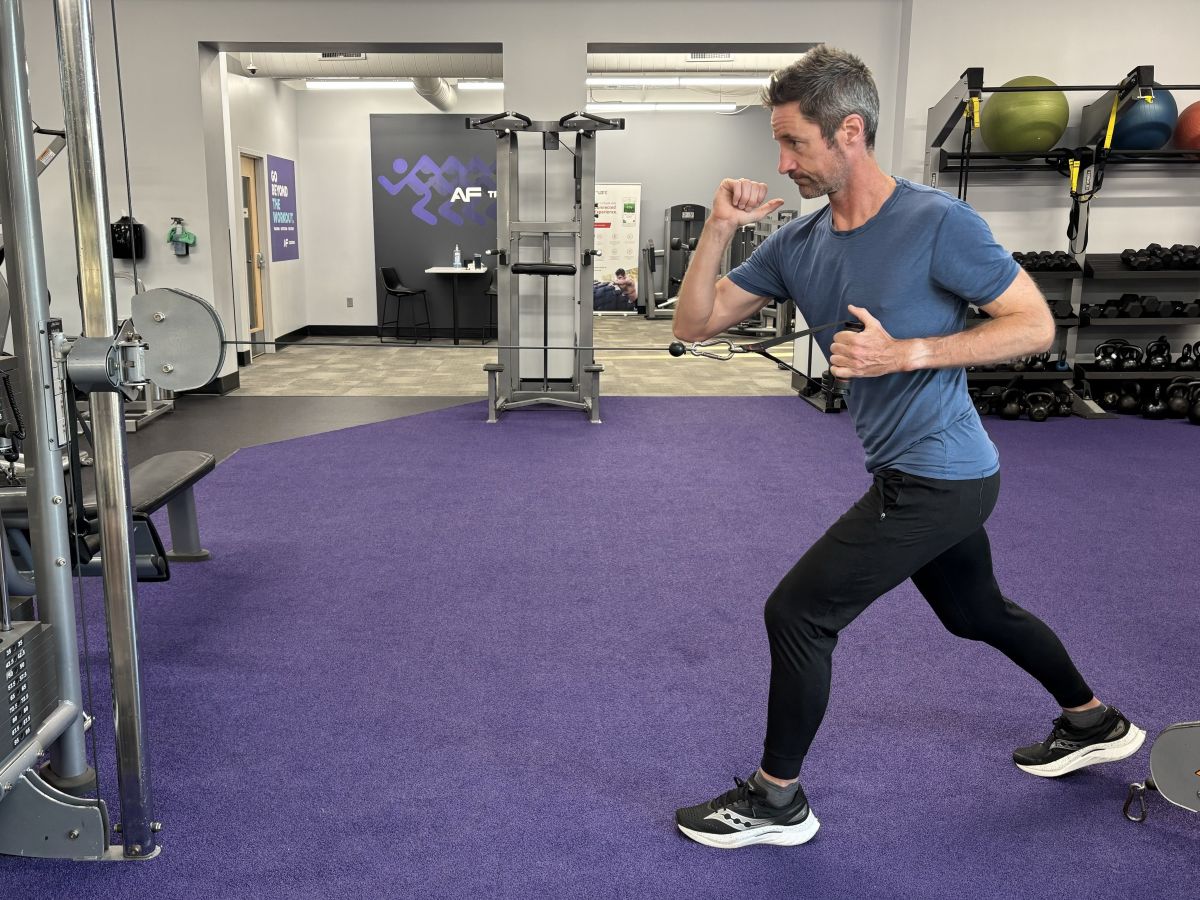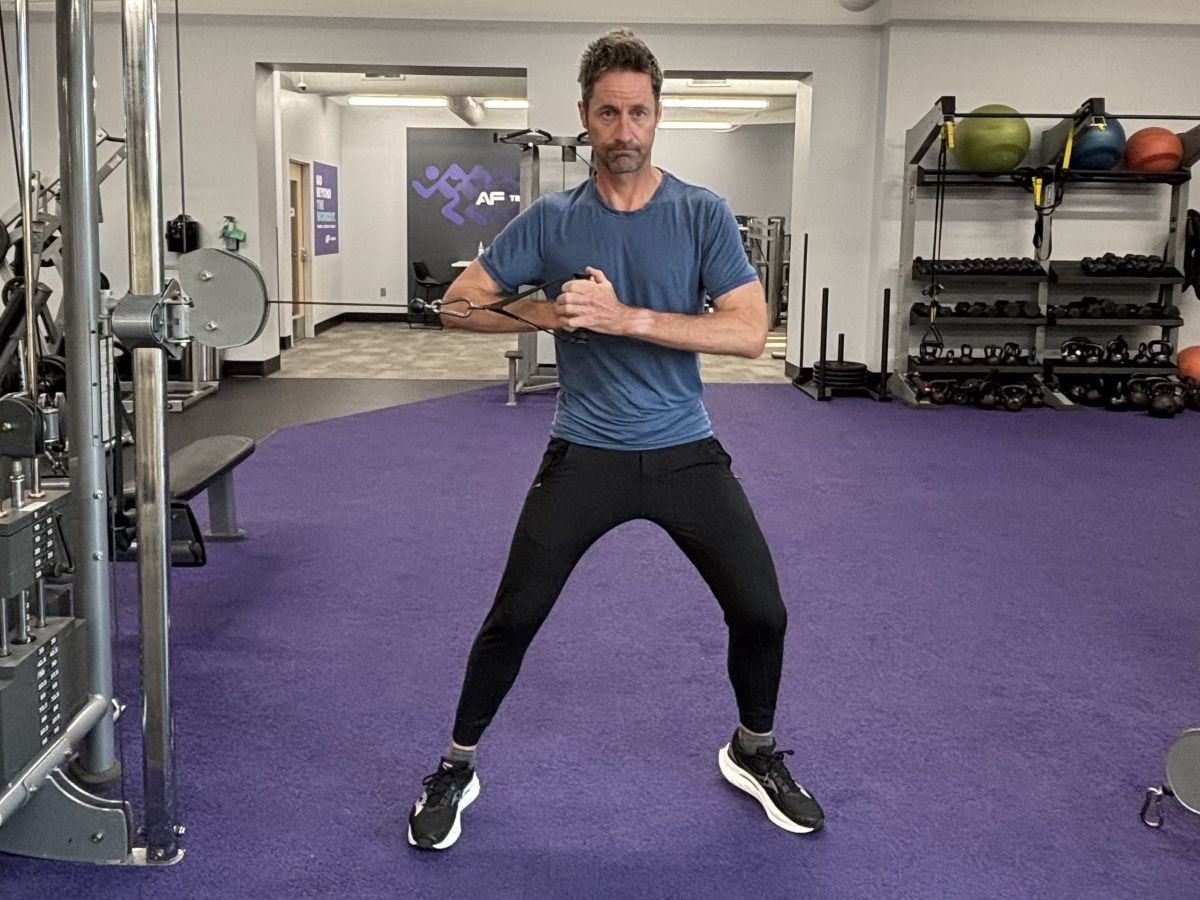 When it comes to running efficiency, we tend to focus on the arms and legs, and what they can do to help us run fast, far, and tirelessly.
When it comes to running efficiency, we tend to focus on the arms and legs, and what they can do to help us run fast, far, and tirelessly.
While our core is extensively discussed as a stable base of movement for the arms and legs, not much is said about core mobility — about how, exactly, this system containing the spine, pelvis, and shoulder blades can and should move powerfully when we run.
In this article, we explore exactly this: active, strong spinal and scapular mobility. This may be the secret to elite-level running since this kind of mobility leads to a longer, more powerful stride while also providing more cushioned stability.
Your Core’s Secret Weapon: Trunk Elongation and Rotation
When we run, the spine should not move very much. The two primary movements in life — flexion (toe touching) and extension (back bending) — are limited in efficient running. But we do use the other two motions, side bending and rotation. In fact, they’re crucial for both enhanced power and stability.
Spinal Elongation and Shortening
During the push-off phase of running, the lower spine and pelvis elongate on the side of the push-off leg. On the opposite, flexion side, the spine does the opposite and shortens. For both movements, side bending is the primary spinal motion.
When the spine elongates on the stance leg, the glute muscles are able to create more push-off power and therefore a longer stride. The difference can be as much as a few inches both forward and back.
Spinal Rotation
In the upper trunk, there is more subtle motion via rotation. As each leg pushes off, there will be a slight trunk rotation where the upper spine rotates away. At the lower trunk, there is a counter-rotation that helps propel the opposite hip forward. This motion is repeated on each side, with each foot landing.
This little towel-wringing twist and counter twist might not seem like much, but efficient trunk motion can add as much as a foot to every stride length. A secret weapon, indeed!

Jim Walmsley on his way to winning the 2023 Nice Côte d’Azur by UTMB 115k, lifting off from a strong right-leg push-off. Photo: Nice Côte d’Azur by UTMB
Linking Arms to Legs with Scapular Mobility
Complementing the spinal elongation and rotation is an active scapula, or shoulder blade. The shoulder blade moves in four primary ways:
- Protraction: The shoulder blades slide forward, like you’re reaching out
- Retraction: The shoulder blades pull back, like you’re standing proud
- Elevation: Shrugging up
- Depression: Sinking down.
These are powered by muscles like the serratus anterior, trapezius, and latissimus dorsi — all muscles articulating with the trunk, and connected directly to the pelvis and hips, courtesy of the thoracolumbar fascia.
A shoulder-blade-powered arm swing combines with energy from the ribcage to help drive the whole body:
- A forward shoulder blade protraction-elevation adds length to the trunk and enhances push-off.
- A rearward retraction-depression helps shorten the swing-side trunk and drive the hip upward and forward.
But to unlock this energy, these elements first need to move.

Grace Leslie, engaging shoulder blades and arms on the way to a win at the 2025 Collegiate Peaks 50 Mile. Photo: Jordan Chapell
Mobility Warm-Ups
To ensure these elements have essential mobility, consider the following exercises as movement preparation:
- Thoracic spine rolling: This includes basic horizontal and vertical rolling, as well as lateral ribcage and front-side and back-side rotation.
- Combined scapula and trunk motions: The short and long exercise is a great movement primer to work through the motions, on the ground, without resistance.
Power Exercises for the Trunk and Scapula
Here are two of my favorite running-specific strength exercises that promote strong core mobility through both spinal and scapular active motion.
Both exercises are best done using a cable pulley system, which keeps the resistance consistent from shortened to lengthened positions. They can still be performed using resistance bands, but an effort should be made to use the longest bands available, in order to have a smaller resistance gradient.
Single Arm Runner Row
This exercise mimics the active rearward arm swing with same-sided trunk shortening and rotation.
To Perform
- Stand in a staggered stance facing the pulley machine.
- Option A — Static legs: For this version, the legs do not move. The row-side leg should be forward, with knee bent.
- Option B — Dynamic knee drive: For this version, the drive leg starts behind.
- The pull arm is outstretched in front, under mild resistance, allowing both trunk elongation and scapular elevation and protraction.
- Forcefully pull the handle toward the waist. When the elbow begins to bend, the shoulder blade should begin to slide — back (retraction) and down (depression) — until the hand gets to the waist.
- For option A, the legs stay static.
- For option B, concurrent with the arm pull, then same-side knee drives upward and forward.
- For both, hold the contraction a full second, then slowly release back on an elongated position.
- Repeat with a heavy enough weight to maintain good alignment and control, and complete 6 to 10 repetitions.
[Editor’s Note: If you are unable to see the video above, click here to access it.]
Single Arm Runner Punch
This exercise mimics a whole-body push-off with trunk elongation and exaggerated forward arm swing.
To Perform
- Stand in a staggered stance facing away from the pulley machine. If holding the handle in the right hand, then right leg should be staggered back, with the left stepped forward.
- Forcefully push (punch) the handle forward, to the level of the chest. Simultaneous to the arm push, the same-side foot and hip should push and pivot forward, and trunk elongate and rotate forward. Lastly, a pull punch should create a protracted and elevated shoulder blade.
- Hold the contraction for a full second, then slowly reverse the motion.
- Repeat with a heavy enough weight to maintain good alignment and control, and complete 6 to 10 repetitions.
[Editor’s Note: If you are unable to see the video above, click here to access it.]
Work the Exercise by Feeling it in the Stride
This subtle-but-powerful spinal and scapular motion is best felt in these gym exercises. Then, when it is time to run, clue into the natural spinal and scapular movements.
I don’t recommend forcefully moving the spine or scapulae while running. Remember the movement from the exercises, then simply allow the movement to happen when you run. It will feel best and most natural with fast running, so try short or medium-length speed intervals and clue into the movement of the spine and shoulder blades.
Conclusion
These small motions may not seem like much, but a little spinal and scapular motion goes a long way to creating more stride length, power, and cushioned motion. Work these exercises into a strength routine, and watch your running ascend to greater performance heights!
Call for Comments
- Have you tried the exercises?
- What did you think of them?






